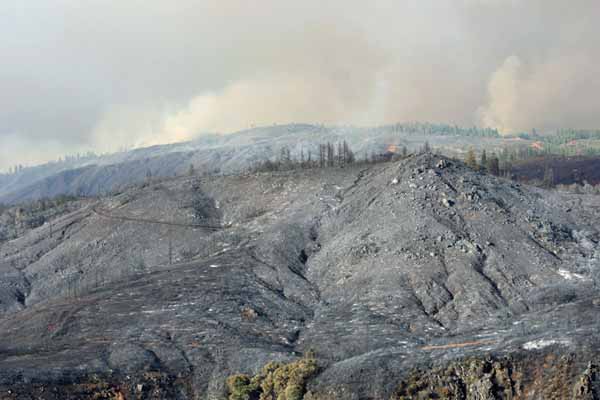
In a November 13 webinar at 1 p.m. MST Jamie Lydersen will present her findings about how the effects of fuels management and previous fire affected the severity of the Rim Fire that started on the Stanislaus National Forest and burned into Yosemite National Park.
It seems intuitive to those who study wildland fire that a reduction in fuels will result in a decreased rate of spread and fire severity for the next wildfire, but it’s always good to have data that can confirm or refute long-held beliefs.
Here is a description of Ms. Lydersen’s research.
The 255,000 acre 2013 Rim Fire created an opportunity to study fuels treatment effects across a large forested landscape in the Sierra Nevada. We assessed the relative influence of previous fuels treatments (including wildfire), fire weather, vegetation and water balance on Rim Fire severity. Both fuels treatments and previous low to moderate severity wildfire reduced the prevalence of high severity fire. Areas without recent fuels treatments and areas that previously burned at high severity tended to have a greater proportion of high severity fire in the Rim Fire. Areas treated with prescribed fire, especially when combined with thinning, had the lowest proportions of high severity.
Jamie Lydersen is an associate specialist in the department of environmental science, policy and management at the University of California, Berkeley and a contractor for the Pacific Southwest Research Station, USDA Forest Service.
Registration is required to view the webinar.
